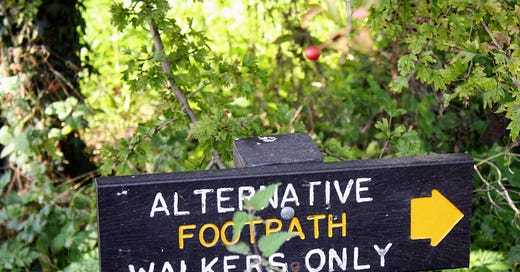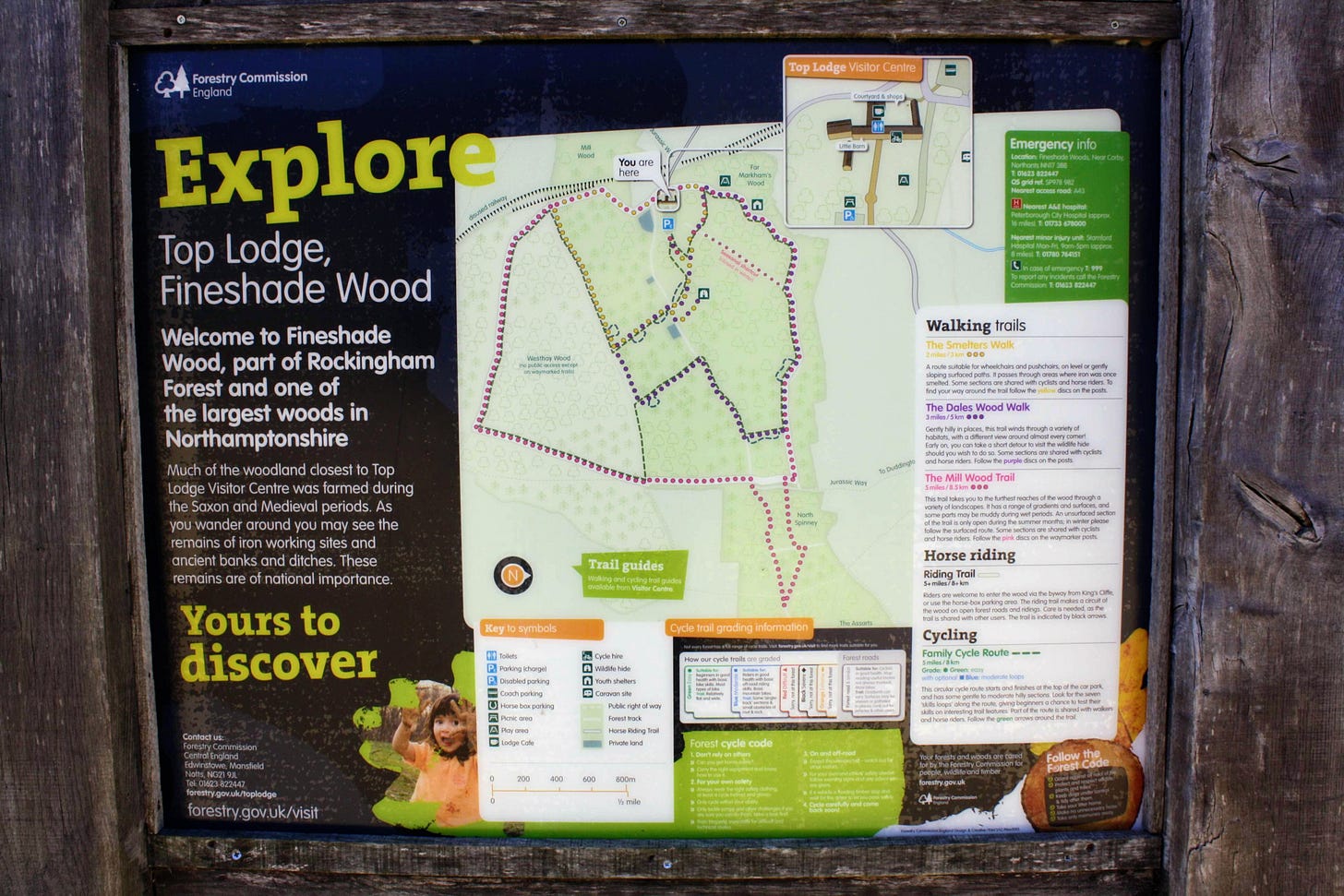Before I start work on any task, I usually create a sizeable to-do list. Inevitably, my walking journey started with downloading step counters, looking at routes, visiting outdoor shops, and wasting hours searching for the perfect boots. All that time, I didn’t take a single new step.
In truth, I was procrastinating and just needed to start walking. Maybe that’s true for you too. But you can get going right now without apps, maps or expensive kit. There are real barriers that make walking inaccessible for some of us, but even these can be overcome.
I want to share ten of my own steps to walking in the hope they inspire you to begin today.
First steps to walking
Start where you are. One of my most significant barriers to walking was the idea that I had to go somewhere beautiful, interesting, or remote. There are long-distance paths and national trails to explore, but a route doesn’t have to be in a guidebook to be great. The best walks start at your front door. Regularly strolling around the block will soon give you a detailed knowledge and appreciation of your local area. You can find fascinating things on your doorstep.
Take your time. Step counters encouraged me to focus on distance, and realising I still had 8,000 steps to walk was discouraging. But my short, slow walks built into more extended explorations as my confidence and stamina grew. Take your time in every sense: don’t put yourself under pressure to walk like others do; step out when you want to so it doesn’t become a daily chore; and only increase the length of your walks when you’re ready. You can set your own pace.
Practical preparations
Dress for the weather. I live on a wet, windy coastline where a waterproof jacket seems essential. But I’ve learned that nothing keeps me perfectly dry, and even the most efficient moisture-wicking material will get claggy when I build up a sweat. Getting wet and cold is only a problem if you can’t get warm and dry again, but being hot and sweaty can also be unpleasant. You don’t need to invest a fortune in the latest tech fabrics to get pleasure from walking. Layers are your friend. If you’re starting with walks around the block, and it’s not too windy, using an umbrella is also a surprisingly good option in case of rain.
Look after your feet. Bunions run in my family. I’ve always worn pretty sensible shoes, so I blame genetics, not footwear, for the pain in my feet. But finding comfortable walking shoes is, honestly, a nightmare. I experimented with barefoot shoes in the early days, but they just made the problem worse. Realising I needed more support, I spent a lot of money on an excellent pair of trekking books from Hanwag designed specifically for people with bunions. In the end, I found them too heavy for long-distance walking. Now, I go through extra wide fit Skechers like they’re going out of fashion. They don’t last as long as I’d like, and I wouldn’t want to take them up a mountain, but they’re perfect for everyday walking. Your favourite comfortable shoes are ideal for your first walks. Soft socks go a long way, too, and podiatrist Rebecca Rushton offers excellent advice on blister prevention, which I highly recommend.
Stay safe. While I will always advocate for the value of bravery, risk is something to take seriously, especially if I plan to stray off the beaten track. If you’re in a town or city, walk in daylight or stick to well-lit routes. If you are on country roads, stay at the edge facing oncoming traffic and be careful on blind bends. And if you’re more adventurous, please don’t attempt a climb if you aren’t confident you can make it back down again; the real danger of a mountain starts at the top, not the bottom. Tell someone where you’re going. And remember that getting safely home again is the best bit of walking.
Walking further
Engage your senses. I live with anxiety, and I find the 5-4-3-2-1 grounding exercise can calm me down while helping me notice the place I’m walking. As you walk, name five things you can see, four things you can hear, three things you can touch, two things you can smell and one thing you can taste. Even if you don’t experience anxiety, the exercise will enrich your experience. Your whole body walks, and you take your senses with you when you explore.
Experiment with pace. Finding my natural rhythm took a while. It turns out I’m pretty slow, but sometimes, I deliberately go even more slowly to pay more attention to the place I’m walking through rather than focusing on the destination. Other times, it’s good to push myself and work up a sweat. Your experience of walking changes depending on your pace, so experiment with what works for you in different locations and circumstances.
Discover new routes. I wanted to walk further afield once I’d built up some confidence. Initially, it was exciting to research different places to walk. However, one of the many challenges of having aphantasia is that I can’t hold the image of a map in my head and translate it onto a landscape, so now I prefer routes with clear waymarking over anything requiring navigation. Give me a nature reserve, an interpretation board and some coloured trail markers, and I’m a happy bunny.
New adventures
Make it social. Walking with others can be stressful if I try to negotiate over pace silently. I’ve learned that it’s OK to say if the group is moving too fast, and I’ve rarely found that people are unwilling to slow down or wait. While I love to walk and talk, it’s also good to explore in companionable silence. There are no rules to say you have to speak; sometimes, you can walk with people and not have a conversation.
Reflect and appreciate. Journaling has been a big part of my journey, and I often make notes about my walks. My episodic memory doesn't work well, so I stop frequently to write about where I’ve just been. Keeping a journal of my experiences also helps me see progress over time. Sometimes, that progress is not linear, like when I walked back down a mountain at the start of the Three Peaks Challenge. But my overwhelming feeling is one of gratitude that I started walking in the first place.
I’d love to hear more about your walking experience, whether you’re a seasoned wanderer or taking your first steps. Feel free to share your thoughts in the comments below and share this article with others.








I'm so happy you're feeling inspired to start walking again, Bev. Thanks for sharing about Street Wisdom, too. It looks fascinating.
No 7 about pace and No 9 about being sociable caught my attention Dru.
I learned to go ridiculously slow through a couple of experiences with the Street Wisdom movement, and its one of my favourite things to do.
When walking is for the pleasure of walking and not simply to get to a new destination, there's an opportunity to notice what might otherwise be missed.
The point about being sociable....I dabble with a little Nordic Walking. I did it with a group for a while. I like 'peopling'! But i quickly discovered that I enjoy it much more as a solo activity, maybe accompanied by a podcast or an audio book because that makes me go further, when I'm fascinated by the episode or chapter, I just keep going.
My daily walking habit has rather fallen off my agenda. Your writing makes me miss it. I think it may be time to start again 🤔 Thank you Dru 🙏